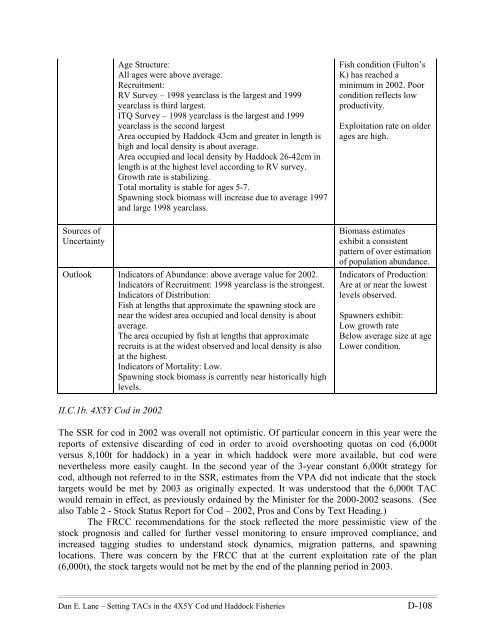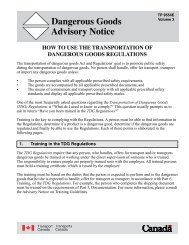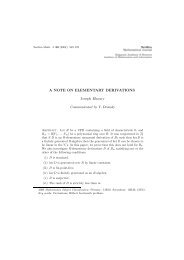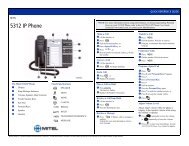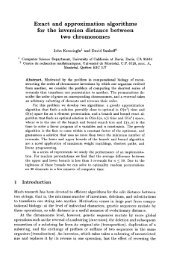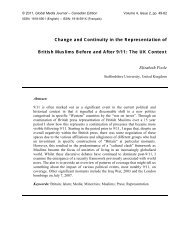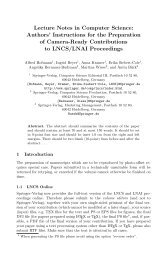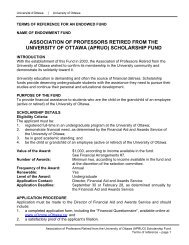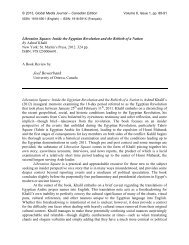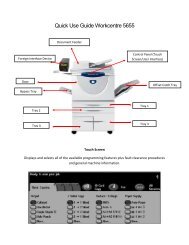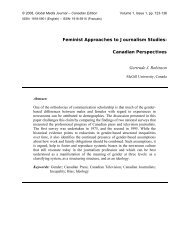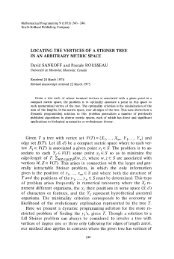PRACTICING PRECAUTION and ADAPTIVE MANAGEMENT ...
PRACTICING PRECAUTION and ADAPTIVE MANAGEMENT ...
PRACTICING PRECAUTION and ADAPTIVE MANAGEMENT ...
- No tags were found...
You also want an ePaper? Increase the reach of your titles
YUMPU automatically turns print PDFs into web optimized ePapers that Google loves.
Sources ofUncertaintyAge Structure:All ages were above average.Recruitment:RV Survey – 1998 yearclass is the largest <strong>and</strong> 1999yearclass is third largest.ITQ Survey – 1998 yearclass is the largest <strong>and</strong> 1999yearclass is the second largestArea occupied by Haddock 43cm <strong>and</strong> greater in length ishigh <strong>and</strong> local density is about average.Area occupied <strong>and</strong> local density by Haddock 26-42cm inlength is at the highest level according to RV survey.Growth rate is stabilizing.Total mortality is stable for ages 5-7.Spawning stock biomass will increase due to average 1997<strong>and</strong> large 1998 yearclass.Outlook Indicators of Abundance: above average value for 2002.Indicators of Recruitment: 1998 yearclass is the strongest.Indicators of Distribution:Fish at lengths that approximate the spawning stock arenear the widest area occupied <strong>and</strong> local density is aboutaverage.The area occupied by fish at lengths that approximaterecruits is at the widest observed <strong>and</strong> local density is alsoat the highest.Indicators of Mortality: Low.Spawning stock biomass is currently near historically highlevels.Fish condition (Fulton’sK) has reached aminimum in 2002. Poorcondition reflects lowproductivity.Exploitation rate on olderages are high.Biomass estimatesexhibit a consistentpattern of over estimationof population abundance.Indicators of Production:Are at or near the lowestlevels observed.Spawners exhibit:Low growth rateBelow average size at ageLower condition.II.C.1b. 4X5Y Cod in 2002The SSR for cod in 2002 was overall not optimistic. Of particular concern in this year were thereports of extensive discarding of cod in order to avoid overshooting quotas on cod (6,000tversus 8,100t for haddock) in a year in which haddock were more available, but cod werenevertheless more easily caught. In the second year of the 3-year constant 6,000t strategy forcod, although not referred to in the SSR, estimates from the VPA did not indicate that the stocktargets would be met by 2003 as originally expected. It was understood that the 6,000t TACwould remain in effect, as previously ordained by the Minister for the 2000-2002 seasons. (Seealso Table 2 - Stock Status Report for Cod – 2002, Pros <strong>and</strong> Cons by Text Heading.)The FRCC recommendations for the stock reflected the more pessimistic view of thestock prognosis <strong>and</strong> called for further vessel monitoring to ensure improved compliance, <strong>and</strong>increased tagging studies to underst<strong>and</strong> stock dynamics, migration patterns, <strong>and</strong> spawninglocations. There was concern by the FRCC that at the current exploitation rate of the plan(6,000t), the stock targets would not be met by the end of the planning period in 2003.Dan E. Lane – Setting TACs in the 4X5Y Cod <strong>and</strong> Haddock Fisheries D-108


